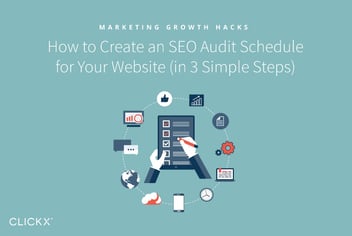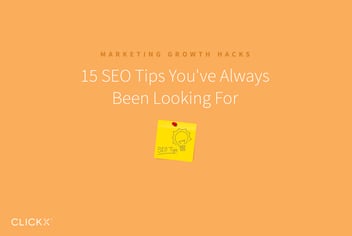Beginner’s Guide to Search Engine Optimization
Search engine optimization is constantly changing, which means that strategies revolving around it are also changing. It’s important to know exactly how to approach SEO in today’s environment, and here’s a comprehensive beginner’s guide to help get you started.
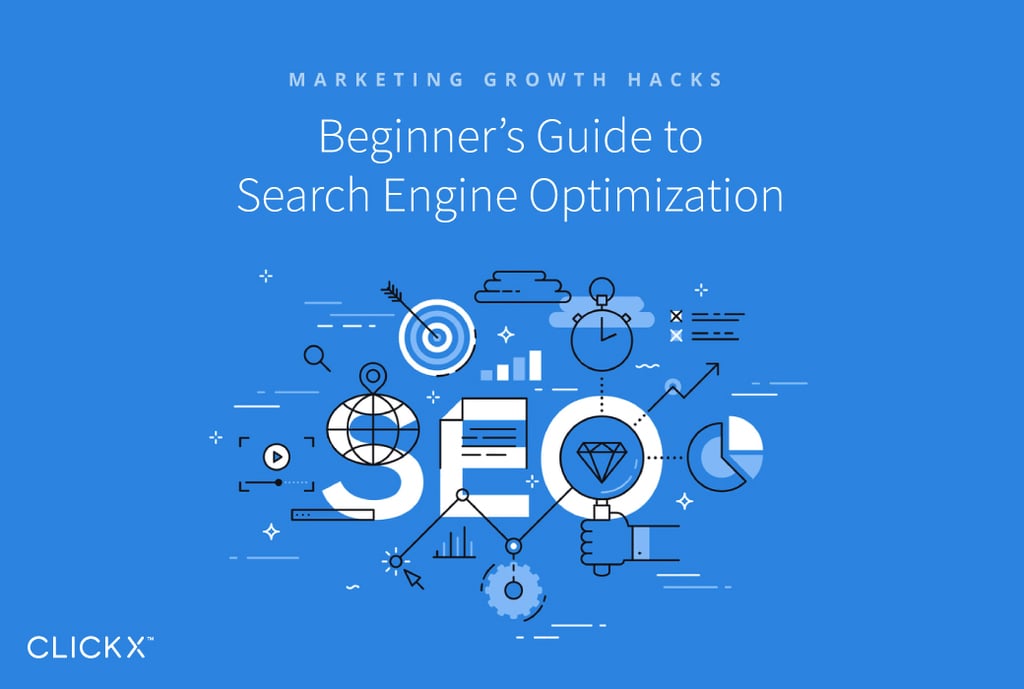
Emphasis on Mobile SEO and High Rankings
Two things to keep in mind before you get started is that today, 96% of people turn to their smartphones to find the products and services they want, and 67% of the buyer’s journey is now accomplished digitally.
These stats alone illustrate how important it is that businesses get the highest rankings possible to reach the leads they want.
It’s also important to consider the fact that few people look beyond the first page of Google rankings today. In fact, one popular joke in the SEO industry is that “the best place to hide a dead body is page 2 of Google search results.”
Google’s first page has ten organic ranking spots, but in some cases depending on your service or product, many paid ads can surround the organic results, making that top spot crucial if you want to be seen.
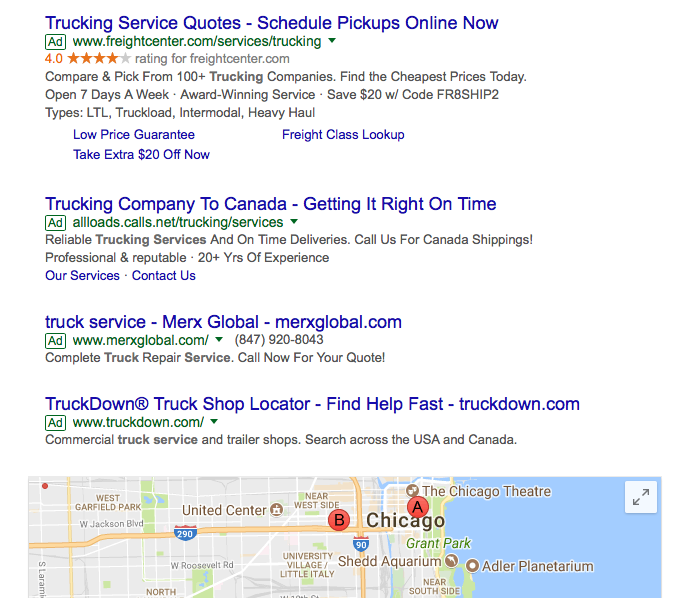
As you can see in the image above, four ads cover the top four results for the example search “trucking services,” before a map appears below, which is followed by company listings above the first organic ranking. Does this mean that paid search is the best strategy? Not necessarily.
While paid search is certainly helpful, SEO is crucial as well. People will look down the entire first page in many cases before clicking on a page, making ranking organically an important task.
If you want to get your website to rank as well as it can, there are certain specific steps you’ll need to take to get your pages on the first page.
The first step is keyword research.
Research Keywords Like a Ninja
When performing keyword research, it’s ideal to divide your keywords into three buckets to keep them more organized.
These buckets include:
- Navigational – searches performed to locate a specific website (e.g. “Twitter,” “chase log in,” “[company] address”)
- Informational – searches performed to answer questions to inform visitors (e.g. “signs of the flu,” “chicago home prices,” “4k tv reviews”)
- Transactional – searches performed with the intention of making a purchase (e.g. “get insurance quotes,” “buy furniture online,” “subscribe to sun times”)
One of the best ways to find the best keywords to rank for in these categories is the Keyword Planner Tool provided by Google AdWords. This free tool is one of the best to use because it provides you with accurate search volume and other information directly from Google.

Using the Keyword Planner, you can enter a search term, and it will provide you with a list of related keywords, along with information such as the average monthly search volume, competition level, and suggested bid for each keyword.
With this information, you can determine the best keyword opportunities to target.
Another great way to see what your audience is searching is to simply perform a Google search, which will show suggestions for keywords.

Don’t Neglect Your Competitors
In line with being a stealthy ninja, you should spy on your competition as much as you can. Take a close look at what your competitors are ranking for, which you can easily do using the Clickx platform.

Our platform will allow you to see everything from keyword rankings to the traffic that keyword generates. Once you find those opportune keywords, it’s time to add them to your own to track your website’s rankings over time. Clickx allows you to do this as well.

You’ll be able to see where you rank, changes in ranking to determine what’s working and what isn’t, corresponding URL, search volume, cost per click, and difficulty or competition level. You should also acknowledge that your keyword list will expand. Always be on the lookout for new opportunities, as you can spread your keyword map to make your website even more of an industry authority while continually rising above competitors.
With these tools, you can easily find the best keywords to rank for, and figure out what steps to take to rank for them. If you notice a drop in keyword rankings for a certain page, you can work on the page, tweaking the content, and see if that makes a difference over time. Keep in mind that over time you will find new competitors to look at, develop more products or services, leading to more keywords over time that you can use to grow your business’s online presence.
Create Top-Quality Content
You can have all of the keywords you need in your arsenal, but the only way to make use of them is to create the best content you can. Without authoritative and shareable content that attracts audiences and properly utilizes your keywords, you’ll find yourself unable to move forward.
One of the best ways to go about content creation is to consider the buyer’s journey for every content piece. Specifically, buyers will be reading content at various points throughout the journey, whether they’re looking for a solution or trying to decide which solution is best.
This is why it’s important to write content that hits each step of the buyer’s funnel from top to bottom, including awareness, consideration, and decision.
Awareness
At the top of the buyer’s funnel is Awareness. This is where the buyer merely wants information about a service or product, or even something simply pertinent to the industry. This step is all about information, which means you should write informational and topical content for people in this niche.
This section often has questions that people ask to learn more, such as “what is SEO?” or “How can I improve my website?” This is where you step in to provide information that these individuals are seeking, which can help move them along the buyer’s journey. If a person looking for information before considering a product or service turns to you as a resource, you can then lead them down to the bottom of the funnel.
A free tool like a href=”http://answerthepublic.com”>AnswerThePublic can help you find some of the questions that people are asking when looking for information, giving you ideas for topics to cover in a blog.
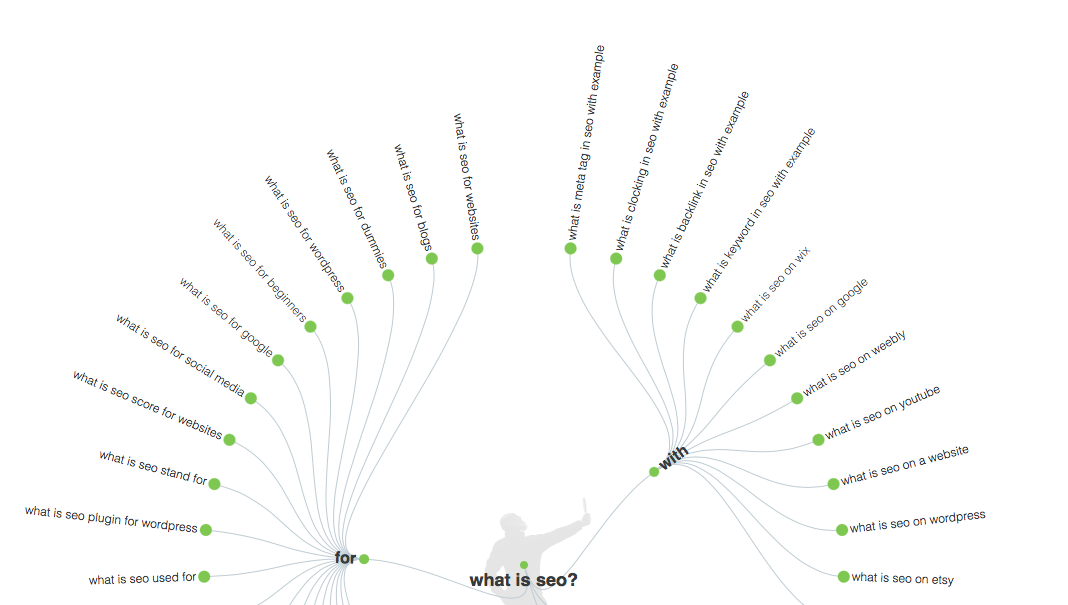
Consideration
At the middle of the buyer’s funnel is the Consideration phase, which is when people have moved beyond simple information and are actively considering purchasing a product or service. This is where you want to convince them that you have the solution they need.
This content will include “Best product for _______” or “A vs B product/service” to help prospects find exactly what they need or want. You want to convince these people that you offer the best products or services in your industry, leading them to make a decision in your favor.
Decision
The bottom of the funnel is where people are ready to make a purchase. Here people will want to know exactly why you’re the best choice and what you have to offer them. Content here will include branded keywords that people are likely searching because they want to buy from you.
At this point pages detailing pricing and services or products, with potential order or request forms, will help lead these individuals to a sale.
Avoid Keyword Stuffing
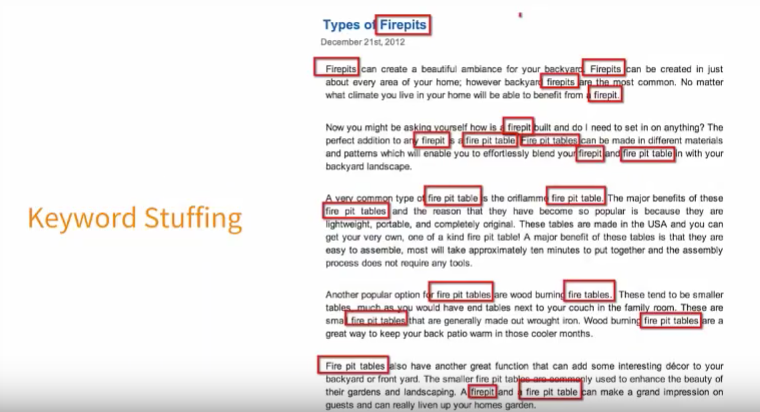
Back in the early days of SEO, the quality of content didn’t matter as much as the quantity of keyword instances in a blog post or webpage. However, that has become the converse over the past several years.
Today it’s all about writing good, readable content that only incorporates keywords a set number of times.
Google’s Panda update is largely responsible for punishing websites that practice keyword stuffing today. Ever since its implementation, keyword stuffing has been viewed as a spam technique that will likely get your website—or at least the offending pages—off of search result pages.
The best way to avoid filling your content with a harmful amount of keywords is to write for the user, not Google.
Let optimization occur naturally, with properly implemented keywords that seamlessly blend with the rest of the content.
Come Up with Topics Regularly
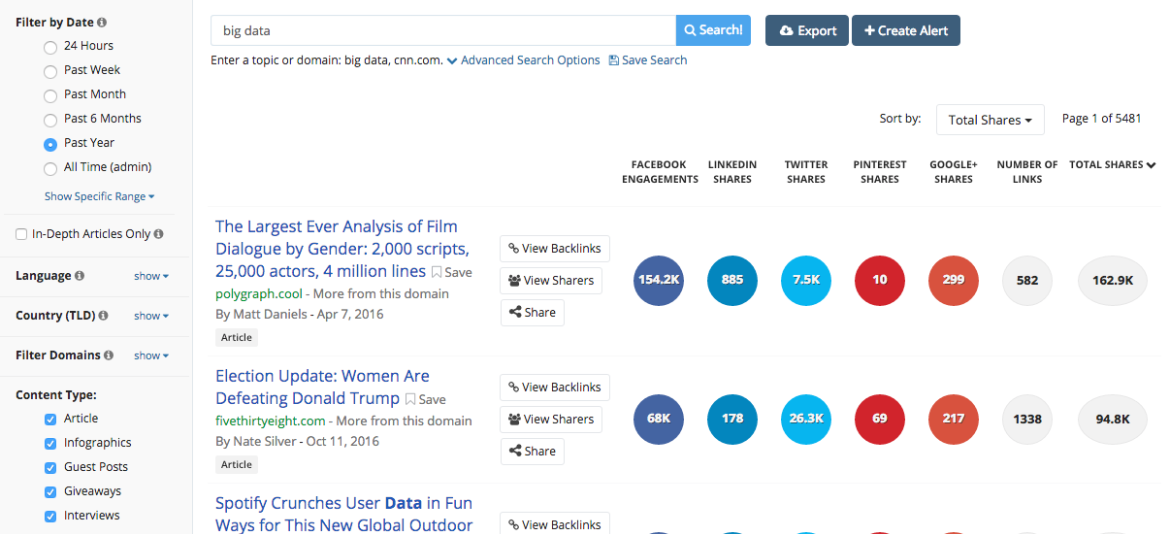
Over time it can become difficult to come up with new topics to write about on your own, but there are plenty of resources out there to help you find topics, including BuzzSumo, which can provide you with a list of relevant topics based on trends in the industry.
This way you’ll be able to consistently find topical subjects to cover, while also potentially helping you learn more about a topic with which you may have otherwise been unfamiliar.
You can also outsource content writing to professional content marketers and copywriters who can generate high-quality content on a consistent basis.
Also, keep in mind that it’s better to write long content with 1,000+ words instead of splitting content into smaller parts, because while you may have more posts to share on social media with the latter, your SEO will be much better with the former.
Solid On-Page Optimization
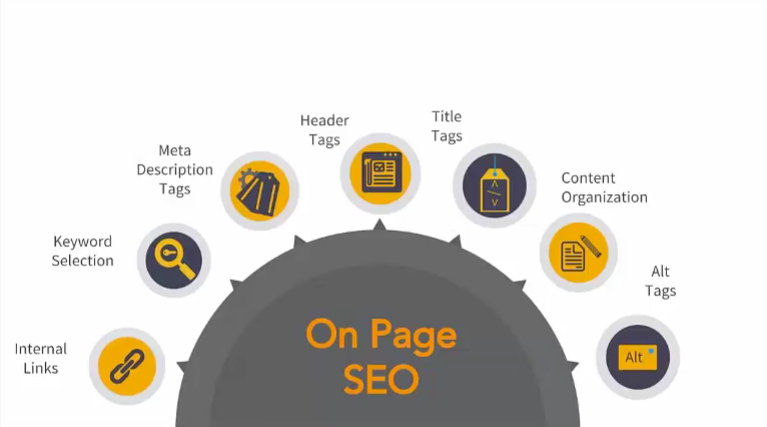
So, now you understand how keywords and content work as well as their importance.
However, that’s only the beginning.
The next step is to take care of all of the technical on-site aspects of SEO, which are the elements that can make all the difference in your campaigns.
There are a lot of complex elements, from internal linking to headers and alt tags, which you may be better off outsourcing to SEO specialists and developers.
A lot of what makes for a successful website and technical SEO is strong development, which makes having a professional developer on your team crucial. There are many different CMSs and platforms that can confuse people who aren’t used to them, but having a developer can keep you on top of things, fixing errors and keeping your site up.
Connect Google Search Console
One of the most effective ways to boost your website’s SEO is to connect it to Google Search Console. Unfortunately, many people don’t even know about Search Console, which can leave their website undeveloped and prevent it from reaching its full SEO potential.
Google’s Search Console can tell you exactly what’s wrong with your website, such as missing meta data and header tags or 404s. While you don’t need to be an expert to use it, make sure you have a team who uses it to help keep your site running at optimal performance.
A developer other professional can give you access to your Search Console account and you’ll be able to see the ways in which you can improve your website.
Optimize Headers and Internal Links

One of the main considerations in on-page SEO should be header tags, which entails formatting the title of your post as a keyword-optimized H1, while all subsequent headers appearing on the page will be H2s, H3s, or H4s, etc. Generally, having optimized H2s will be the most common addition, but depending on the amount of subpoints, you may include occasional H3s or lower.
Internal linking is also important, as linking to pages on your website that already gain some traffic can help your new pages rank, while also potentially helping boost the page you’re linking to.
These two elements can greatly improve your SEO.
Optimize Images

While you may be focused on optimizing text with keyword-enriched content and headers, another aspect that is often overlooked is optimized images.
When adding images to a webpage or blog post, you should optimize the filename of the image to include keywords relevant to what’s in the image, along with relevant alt text that describes it. This can help people find your website when performing Google Image searches in addition to traditional searches.
Include Relevant and Appealing Title Tags

Separate from an H1 header, your title tag will be the first thing that people see when they perform a Google search, and is likely to be the main influence in their decision to visit your website.
Title tags used to be formatted as “keyword | keyword | keyword” to gain as much SEO traction as possible, but today Google favors natural title tags that appear as long-tail phrases that people are likely to search, such as “how to” or a question that you may answer on your page.
The length limit for title tags is approximately 600 pixels (roughly 60 characters), which you can accurately measure along with meta descriptions using the free Clickx SERP Preview Tool.
Place Emphasis on Mobile
As smartphones and other mobile devices become the main tools for performing searches for products and services, Google is putting top priority on mobile indexing over desktop websites.
Unfortunately, many businesses don’t realize how important having mobile-optimized websites and pages are, and may neglect to optimize or even create mobile-friendly pages. This hurts these businesses because Google will index high-quality mobile pages over desktop pages every time, even for individuals using desktops.
Maximize Page Speed
One way to make sure your mobile pages perform well on Google is to make sure they’re as fast as possible.
The ideal loading speed for webpages today is 2.9 seconds or faster, as people are likely to leave a page that takes too long to load, particularly when performing mobile searches on-the-go.
The Importance of Link Building
Once you’ve taken care of all of your on-page SEO, it’s time to take advantage of the most effective off-page SEO strategy: link building.
Link building entails getting links to your website on other reputable websites and blogs. You can submit a guest post or get your website listed on different types of directories to build your online reputation and signify to Google that your website is ethically sound.
You can get links to your website to appear on:
- Guest posts
- Blogs
- Videos
- Reviews
- Online directories
- Infographics
- Digital PR
- PDFs
With a large amount of high-quality backlinks, you’ll likely begin to see a dramatic improvement in your rankings.
Unlike on-page content, this is one case where both quantity and quality are equally important.
There are three core steps in link building to follow:
Step 1: Build Assets
The very first step is to come up with as much high-quality content as you can that’s likely to attract audiences. This is content that other websites will want to use and promote, thus sending more people to your website.
Assets can include:
- Blog posts
- Free training courses
- Events
- Cheat sheets
- Ultimate guides
- ROI calculators
- Resources
Once you have developed high-quality content, it’s time to move on to the next step.
Step 2: Link Prospecting
If you have plenty of content to offer, find those opportunities to post it beyond your website.
A great way to find those link building prospects is to follow industry experts on social media or blogs or actively search for guest posting opportunities. Determine who is ideal to interact with and who posts relevant content that could include your own.
Step 3: Link Outreach
Upon finding those ideal prospects for link building, you should begin to reach out to them.
Normally, this will involve sending an email to the prospect that pitches your content in a quick and effective summary. You’ll want to discuss how your content can help them, convincing them that your content will be a good fit for their blog or other platform.
It’s best to stick with personal emails when performing link outreach, as automated or outsourced link building emails can seem generic and unappealing, resulting in failed attempts.
The Ultimate Challenge: Getting Conversions
Getting tons of visitors as a result of killer on-page and off-page SEO can be relatively easy through practicing vigilance and remaining aware of any changes in the industry as well as how your website is performing, but getting high-quality leads is another challenge altogether.
You can get all the traffic in the world, but without a sufficient amount of sales to increase your ROI, having an optimized website is meaningless.
Macro vs. Micro Conversions
Most businesses go after macro conversions, which are those conversions that fill out a form directly on the website leading to a potential purchase, but many don’t consider the many micro conversion possibilities that can increase sales.
Micro conversions can include subscribing to a YouTube channel, providing contact information and requesting a consultation with a representative via a website’s chat service, or subscribing to a newsletter.
These micro conversions can help attract and carry along those leads you may otherwise miss, enabling people to more actively engage with your brand and influencing their buying decisions.
Welcome Bars, Lead Forms and Lead Magnets
In addition to off-site micro conversions and generic on-site forms, you can use tools such as welcome bars, lead forms, and lead magnets, which Clickx offers as free marketing tools.
Using a welcome bar, you can include a message at the top of the page that guides visitors to an offer that serves as a small step toward becoming a customer, unlike a “request a quote” button or other more significant step. This can include a link to a webinar or other type of informational resource that educates and influences them.
Lead forms can also be used to appear on each webpage, essentially turning your entire website into an omnipresent “contact us” page that encourages visitors to leave their basic contact information. This is particularly useful to have because most visitors don’t make it to a contact page before leaving the site.
Lead magnets are another great way to generate high-quality leads. These can include buttons midway down a blog post or other content that offers a downloadable PDF version or other material, while also pulling an email address to which the content is sent.
Each of these can significantly increase lead generation, helping you on your way to unrivaled success.
Never Underestimate the Power of Good SEO
With all of these elements and steps involved, search engine optimization can be daunting, but it will be worth it when you begin to see the results and the ROI you want from your campaigns. At the same time, you can always outsource your SEO to industry experts who can consistently monitor and optimize your website, allowing you to focus on carrying leads through the buyer’s journey. In the end, high-quality SEO will always serve to maximize your website’s potential and help you get those leads you want, when you want them.

